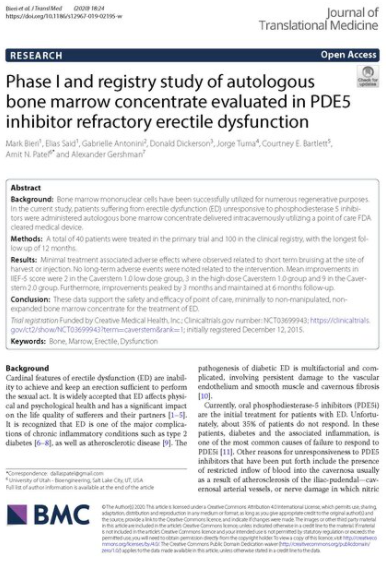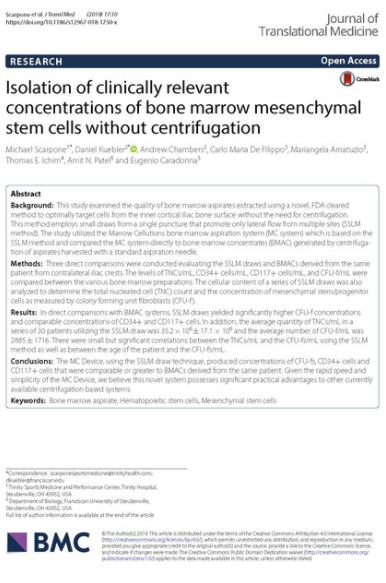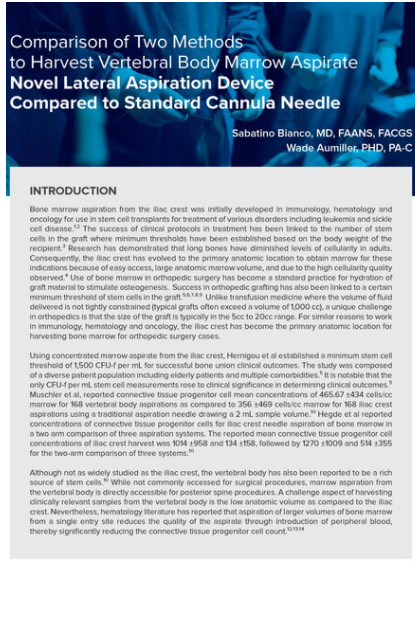The Marrow Cellution™ Bone Marrow Aspiration System is a novel bone marrow access and retrieval device that incorporates features designed to minimize limitations of traditional trocar needles. Traditional needles aspirate primarily through an open-ended cannula, which leads to excess blood collection that requires additional manipulation (i.e. centrifugation or chemical separation in a laboratory). By overcoming these limitations, Marrow Cellution™ maximizes stem- and progenitor-cell recovery and minimizes peripheral blood infiltration.
Marrow Cellution™ accesses aspirate flow collected exclusively laterally, as the tip of the aspiration cannula is closed. This allows marrow collection perpendicular to and around the channel created by the tip of the device, thus avoiding excess peripheral blood infiltration. The device also incorporates technology to precisely reposition the retrieval cannula within the marrow space after each aspiration. These features achieve a clinician’s desire for a single entry point as a single puncture. Marrow Cellution™ provides high quality bone marrow aspirate collected from numerous sites within the marrow geography.
How does it work?

A traditional trocar needle aspirates primarily peripheral blood.
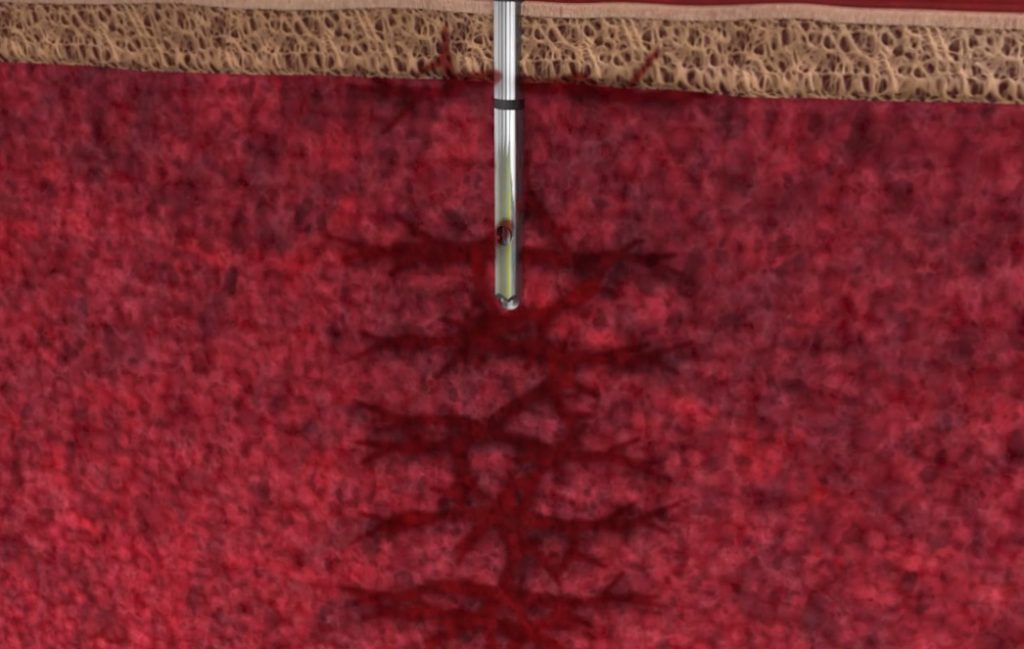
MARROW CELLUTION™ aspirates from multiple geographies while limiting peripheral blood collection.
Learn More
Click to preview more information about the Marrow Cellution non-centrifuge bone marrow aspirate system.
The Marrow Cellution™ system has a number of advantages:
Reduce the Cost of Utilizing Biologics
The Marrow Cellution™ System delivers a solution at a reduced cost compared to other cadaveric or synthetic biologic options for surgical application.
Minimize Sample Waste
Centrifugation systems discard up to 80% of the aspirate due to high levels of peripheral blood, which wastes desired cells (approx. 40%). As regenerative cells increase in density prior to division, they are processed into the undesired red cell centrifuge component and then discarded, limiting the regenerative potential of the resulting sample.
Eliminate the Need to Filter
Cells bound within a cell aggregate can be delivered to the patient when mixed with graft material or injected. Filtering takes additional time, but more importantly filtering reduces regenerative potential.
Minimize O/R Time
Eliminate the centrifugation step that typically requires 20 minutes or more of spin time, additional personnel and support time for prep and cleanup of the equipment.
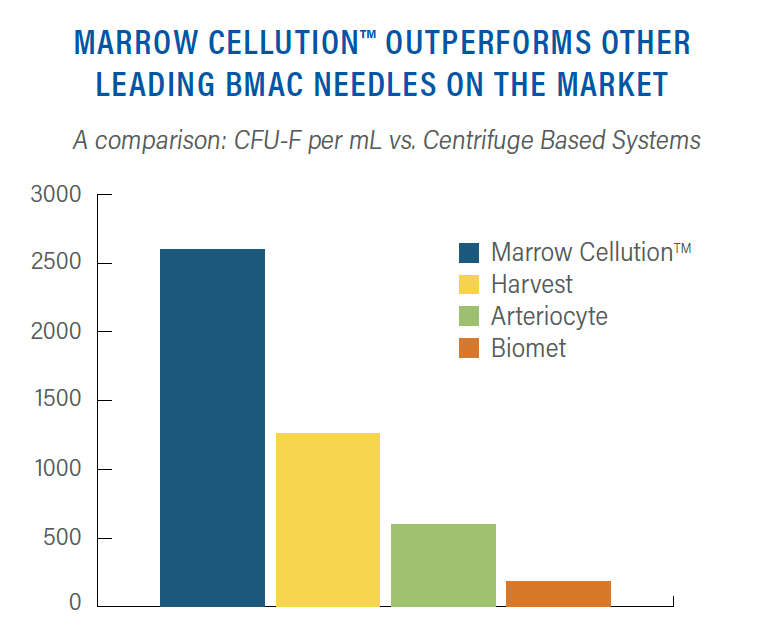
REFERENCES
1. Connolly J. et al. JBJS 1989;71: 684-91.
2. Hernigou P. et al. JBJS 2006; 88 Suppl 1: 322-27.
3. Hernigou P. et al. JBJS 2005; 87: 1430-7.
4. Hedge V. et al. Journal of Orthopedic Trauma 2014; vol 28; issue 10; p 591-598

